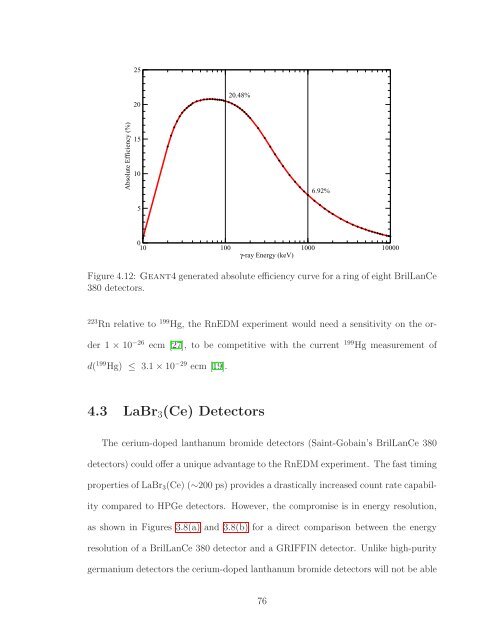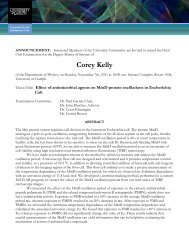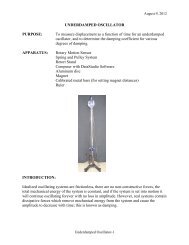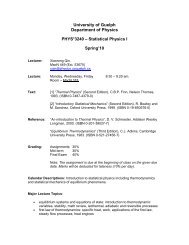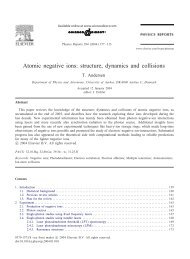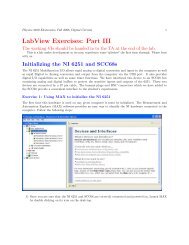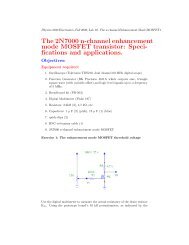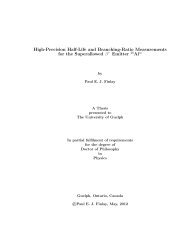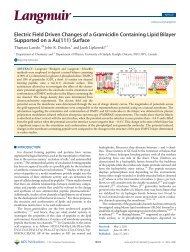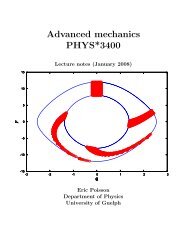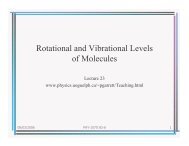Geant4 Simulations for the Radon Electric Dipole Moment Search at
Geant4 Simulations for the Radon Electric Dipole Moment Search at
Geant4 Simulations for the Radon Electric Dipole Moment Search at
You also want an ePaper? Increase the reach of your titles
YUMPU automatically turns print PDFs into web optimized ePapers that Google loves.
25<br />
20<br />
20.48%<br />
Absolute Efficiency (%)<br />
15<br />
10<br />
5<br />
6.92%<br />
0<br />
10 100 1000 10000<br />
γ-ray Energy (keV)<br />
Figure4.12: <strong>Geant4</strong>gener<strong>at</strong>ed absoluteefficiency curve <strong>for</strong>aring ofeight BrilLanCe<br />
380 detectors.<br />
223 Rn rel<strong>at</strong>ive to 199 Hg, <strong>the</strong> RnEDM experiment would need a sensitivity on <strong>the</strong> order<br />
1 × 10 −26 ecm [27], to be competitive with <strong>the</strong> current 199 Hg measurement of<br />
d( 199 Hg) ≤ 3.1×10 −29 ecm [19].<br />
4.3 LaBr 3 (Ce) Detectors<br />
The cerium-doped lanthanum bromide detectors (Saint-Gobain’s BrilLanCe 380<br />
detectors) could offer a unique advantageto <strong>the</strong> RnEDMexperiment. The fast timing<br />
properties of LaBr 3 (Ce) (∼200 ps) provides a drastically increased count r<strong>at</strong>e capability<br />
compared to HPGe detectors. However, <strong>the</strong> compromise is in energy resolution,<br />
as shown in Figures 3.8(a) and 3.8(b) <strong>for</strong> a direct comparison between <strong>the</strong> energy<br />
resolution of a BrilLanCe 380 detector and a GRIFFIN detector. Unlike high-purity<br />
germanium detectors <strong>the</strong> cerium-doped lanthanum bromide detectors will not be able<br />
76


